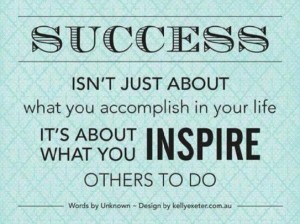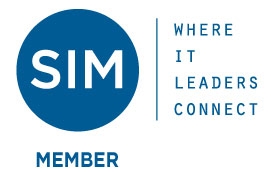If one must use a resume for candidate screening, focus on those who describe their work in terms of leading measurable business accomplishments – not responsibilities.
Half a leader isn’t good enough.
Last week I visited the Boys & Girls of Santa Ana (CA) and was blown away. CEO Robert Santana is changing the lives of inner city kids and teenagers. In a community with a high school graduation rate of about 50%, Robert’s kids graduate at a rate of more than 90% and he gets just about all of them into college despite their financial challenges. After 15 minutes with Robert you know he has the core traits of all great leaders – the ability to visualize a goal and the determination to get it done.
I got a sense of this definition for leadership around 1990. A woman, at the time a senior manager with one of the major CPA firms, called me telling me she wouldn’t take a director of accounting job at a major entertainment company in Los Angeles. She said the job was poorly defined and poorly staffed and the direction they were going in from a systems and reporting standpoint would be a failure. She then told me she’d only take the job if they would agree to finance and support her plan. She got the job and achieved exactly what she said she would do. That’s what leaders do – they tell you what they’re going to do and then they do it.
A few years later I was interviewing a candidate for a VP Manufacturing job who described how he successfully planned and implemented a three-year project to build a multi-plant manufacturing and distribution company throughout Southeast Asia. I then asked him how he would integrate this type of capability within the company’s existing operations in Mexico and the U.S. He then spent 30 minutes describing what needed to be considered. My client company reluctantly hired him, concerned his industry background and manufacturing processes weren’t a perfect job fit. This didn’t matter. Leadership did. He accomplished what he said was required and went on to become the CEO of the parent company within three years.
At about the same time, a CEO whom I met through Vistage (an organization of CEOs) called and asked me what two questions he was supposed to ask all candidates. The open job was for a VP Operations and the candidate turned out to be waiting in his office to be interviewed. I suggested he take a tour of the plant and stop at every area where there was a big problem. After describing the problem ask the candidate how he’d go about fixing it. Then ask the person what he’s already accomplished that’s most comparable. The CEO called me a few hours later saying the candidate did a good job of problem-solving and planning but hadn’t accomplished anything comparable. That was the right decision. Half a leader isn’t good enough.
More recently I received an email from Sydney Finkelstein, a professor at the Tuck School of Business at Dartmouth. He asked me to check out his new book, Superbosses: How Exceptional Leaders Master the Flow of Talent, especially the chapter on how superbosses hire people. The examples cited seem to map closely to the visualization and execution pattern all leaders seem to possess.
Simply put, leadership is the ability to figure out a problem, plan a solution and then implement it. Here’s how this concept has been operationalized in the Performance-based Hiring process we’ve been helping companies implement for the past 25 years.
- First, define the real job. Instead of focusing on skills and experiences, first define the work that needs to be done as a series of 5-6 performance objectives. Each objective needs to clearly describe the task, include some measure of success and explain any unusual restraints or resource limitations.
- Ask the problem-solving or “Visualization” question for the most important challenges. Ask candidates how they would determine the cause of the issue and what would be needed to plan out a solution. Spend 15-20 minutes in a back-and-forth discussion focusing on the thinking process the person uses for problem solving and planning.
- “Anchor” each objective using the Most Significant Accomplishment question. For each objective ask the candidate to describe an actual accomplishment that’s most comparable to what’s required. Spend 15-20 minutes peeling the onion to fully understand the process the person used to accomplish the task.
I refer to this as the Anchor and Visualize questioning pattern, aka: The 2-Question Leadership Test. As long as you define the work that needs to be done ahead of time, it’s uncanny how well the process predicts on-the-job success. In my mind, hiring a person who can tell you how to do something but has never done anything similar, is too much talk and not enough action. However, it’s a bigger risk hiring someone who has done something similar but can’t think any bigger or any differently. These people are just too structured. You’ll be hiring a lot of “super people” if you insist on hiring those who can problem-solve, plan and successfully execute. While this might not make you a superboss, it will certainly make you a super manager.
~~~~~~~~~~~~~~~~~~~~~~~
Lou Adler (@LouA) is the CEO of The Adler Group, a consulting and training firm helping companies implement Performance-based Hiring. He’s also a regular columnist for Inc. Magazine and BusinessInsider. His latest book, The Essential Guide for Hiring & Getting Hired (Workbench, 2013), provides hands-on advice for job-seekers, hiring managers and recruiters on how to find the best job and hire the best people. His new video program provides job seekers inside secrets on what it takes to get a job in the hidden job market.














Comments are closed.